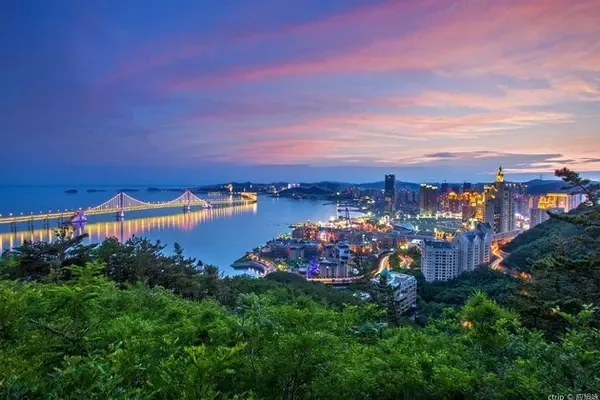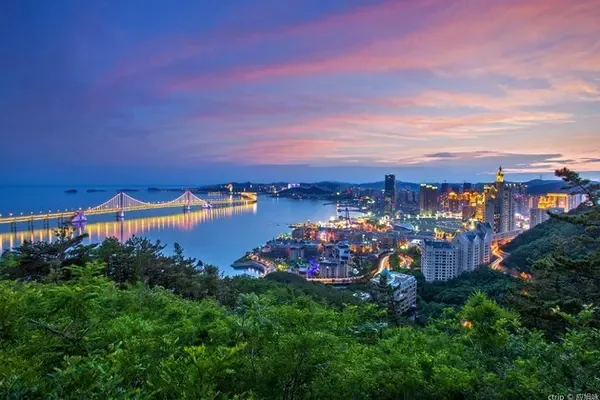The shape and layout of the nine mausoleums of the Xixia Royal Tombs are basically the same. The southernmost part of the cemetery is the double que, facing east and west, with a distance of about 70 meters. The Que platform is square, nine meters long on each side, and about seven meters high, on which a pavilion was originally built. Que Taipei is a stele pavilion, and the north of the pavilion is Yuecheng and Inner City. The two cities are connected, and the plane is in an inverted convex shape. There are stone elephants on both sides of the Shinto in Yuecheng. The inner city is square or rectangular, with a gate in the middle of each side, turrets at the four corners, and a dedicated hall to the west of the south gate. Lingtai is in the northwest of the inner city. The inner city of Mausoleum No. 6 is 183 meters long from north to south and 134 meters wide from east to west. Some mausoleums have an outer city outside the inner city. There are two types of outer city shapes: one is closed, such as Tomb No. 1 in the south; the other is open, without a south wall, such as Tomb No. 6 in the west of the third district. Most of the city walls are rammed in sections, each section is about five meters long, and some are built with stone blocks. There are four rammed earth corners at the outermost four corners of the cemetery, which may be used to mark the area of Zhaoyu.




The mausoleum is tower-shaped, octagonal or circular in plane, about 20 meters high, and divided into five, seven or nine levels. It turns out that each level has eaves and overlying tiles. In front of the mausoleum, a fish-ridge-shaped tomb passage is sealed with soil. In Mausoleum No. 6 that has been excavated, the underground palace is 18 meters in front of the mausoleum platform and 18 meters deep from the surface. The main room is a horizontal rectangular dome-top earth cave, 7.8 meters long and 5.6 meters wide, with an ear room on each side, and the ground is made of bricks. Warrior statues are painted on the two walls of the corridor, and there is a slope tomb in front of it.
The mausoleum platform, inner city, divine wall and double towers are all painted with ocher vermilion fine mud. A large number of fragments of bricks, tiles and glazed components are scattered on the ground of each cemetery. There are two types of colored glaze: yellow-green and dark blue. One of the pieces of green glazed owl kiss is restored to a height of 1.52 meters. It can be imagined that the architecture of the cemetery at that time was very magnificent.
The accompanying tombs are located in the south or on both sides of the royal tomb, and are small in scale and simple in shape. Generally, there is no corner platform and que platform, and the size of the cemetery varies, and there is only the south gate. Some are composed of grave mounds, a city, and a stele pavilion, some add moon city, some have screen walls at the south gate, and some have dedicated halls; some are composed of grave mounds, inner and outer cities, moon city, gate tower, and double stele pavilions . There are round mounds, cylinders, cones, and three-level round pier types, and the sealing soil is all rammed with wooden skeletons. The tombs are all earth caves with square dome tops. There are two or three burial tombs in some cemeteries.




The tombs excavated in the Xixia Mausoleum were all destroyed and looted in the early years, and there are not many burial objects left. The gold-plated copper bull weighing 188 kilograms and the stone horse weighing 355 kilograms unearthed from the accompanying tomb No. 101 are vivid in shape and are rare casting and carving masterpieces. Some remnants of Chinese and Xixia scripts were also found in the mausoleum area.
There is a large architectural site at the northern end of the mausoleum area, facing south, with a nearly rectangular plane, 290 meters long from north to south, and 170 meters wide from east to west. It may be where the Western Xia Ancestral Temple is located.
Xixia focused on the construction of the mausoleum area, built walls around the mausoleum, and opened a door on each side, and the mausoleum buildings were arranged symmetrically along the central axis, the tomb passages were sloped, and the Xuangong was an earth cave dome. Obviously, it was deeply influenced by the Tang and Song burial systems. Impact. The "Jiajing Ningxia New Records" of the Ming Dynasty said that the Xixia Mausoleum "its system is imitated from the Song Mausoleum in Gongxian County", which is in line with the facts. At the same time, we can see the different characteristics of the Western Xia Mausoleum and the Northern Song Dynasty mausoleums: there is no rear mausoleum for burial in the cemetery, no lower palace, the cemetery has a double city wall, the inner city is rectangular in plane, the moon city is added in front of the inner city, and the underground palace is located to the west of the inner city In the north, there are pagoda-style mausoleums and so on. These are of great significance for understanding the relationship between Xixia culture and Han culture.





The emperors and nobles of all dynasties hoped that the mausoleum would be grand and magnificent, but also hoped that it would not be stolen. The tall sealing soil became an important barrier to prevent robbery. However, the mausoleum of the Western Xia King's Mausoleum is not located directly above the tomb, but is located 10 meters north of the tomb, which does not function as a seal at all.
In addition, the entrance to the Xixia king's mausoleum is set inside the dedicated hall, which is also the center of the emperor's mausoleum*. Concealing the direction of the tomb passage is one of the most secretive tasks in the construction of the emperor's tomb. The entrance to the tomb passage of Emperor Wanli in the Ming Dynasty was set on the side of the Baocheng, making it difficult to detect. Archaeologists had to think hard and spend a lot of time when they were excavated in the 1950s . The emperors of Xixia did not seem to be worried about this. Except that the entrance of the tomb passage was directly set in the dedicated hall, there was a fish spine protruding from the ground between the dedicated hall and the mausoleum platform of the Xixia Emperor Mausoleum, and the tomb passage was buried in the sealed soil. below.
Archaeological excavations have shown that compared with the luxurious Tang and Song emperor tombs, the tombs of the Xixia royal tombs are much simpler. They are a three-chamber earth-cave structure consisting of a central main chamber and left and right ear chambers, and there are relatively few funerary objects. These rare features are undoubtedly the creation of the party nation.









To visit Ningxia, you can choose the local professional tourist transportation Ningxia Tourist Scenic Spot Through Train. The staff all wear yellow vests, and the little yellow people are hospitable. There are two tourist distribution centers in the new city railway station and the crescent moon in the old city. The square is convenient for accommodation nearby, there are many hotels, and the transportation is convenient. It is not far from the civil aviation bus, and it is very convenient whether it is by train or plane. The through train of the scenic spot has opened the line from the urban area to the scenic spots around Yinchuan, such as Shahu, Huangsha Ancient Ferry, Shuidonggou, Zhenbeibao Western Film and Television City, Xixia Royal Tomb, Helan Mountain Rock Painting, Shapotou, etc., which is very convenient.

